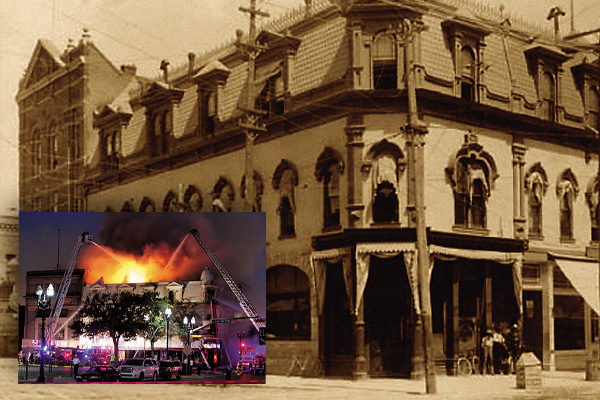 In the late summer of 1895, El Paso, Texas, was John Wesley Hardin’s town.
In the late summer of 1895, El Paso, Texas, was John Wesley Hardin’s town.
A few months earlier, the attorney had been brought in to help his infamous in-law Jim Miller fight an assault with intent to kill charge.
Hardin rented an office on the second floor of the Wells Fargo Building on El Paso Street.
But his past didn’t shake loose. Hardin spent less time at the office and courthouse and more time at the gambling houses and saloons—places like the Wigwam, which he eventually bought an interest in. A figure of shock and awe, Hardin had allegedly put 42 notches on his guns. Even though the last of those had taken place 19 years ago, folks still wanted to play cards with him and buy him drinks. Hardin obliged the starstruck by showing off his quick draw as he shot playing cards, which he signed and gave or sold to souvenir hunters.
Hardin was sinking, pulled down by too much booze, bad companions and poor decisions. One night, he believed he had been cheated during a card game at the Wigwam. Pulling out his gun, he demanded (and got) his money back.
It all came to a head on the night of August 19, when constable John Selman—who had a growing disagreement with Hardin—shot Hardin in the back of the head while the latter rolled dice at the Acme Saloon bar.
Of course, that wasn’t the end of it.
Selman got into an argument with Deputy U.S. Marshal George Scarborough the following April 6. In the alley next to the Wigwam (where Selman once worked as a bouncer), they pulled their guns and fired. Selman went out with his boots on.
Both Selman and Hardin’s bodies were buried at the local Concordia Cemetery, which became one of El Paso’s biggest tourist attractions (even today). Visitors to the city frequently wanted to see the places where Hardin lived and played—the Acme, the Wigwam and the law office.
They’ll have a tougher time of that now.
In July 2011, a fire significantly damaged a 19th-century building on San Antonio Street that had once housed the Wigwam Saloon (perhaps not too strangely, it housed a liquor store at the time of the blaze).
Last April 19, another fire destroyed the place on El Paso Street where Hardin’s law office was located. Ironically, the month before that fire, the city council had formed a committee to put together a list of El Paso’s
historic and endangered structures. At the top of that list: the John Wesley Hardin building.
In the wake of the blaze, the El Paso Fire Department inspected some 600 downtown buildings for code violations. The city council is considering measures to update fire regulations, especially for historic buildings.
El Paso isn’t the only Western town concerned about fires. On May 8—less than three weeks after the Hardin Building went up in smoke—a blaze engulfed three buildings on Prescott, Arizona’s famed Whiskey Row. More than a hundred years of history was gone in just a few hours. A May 20 fundraiser attracted thousands of folks interested in supporting efforts to rebuild the businesses, including the Bird Cage Saloon. The actual buildings, though, are lost forever.
Back in the Old West days, fire was a constant worry. Places like Tombstone and Deadwood were either partially or mostly destroyed by massive blazes—more than once. Apparently, some things never change.






